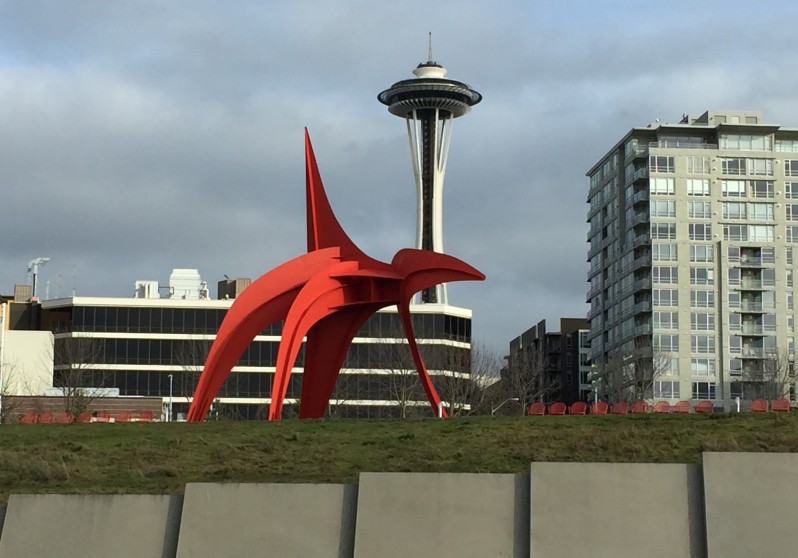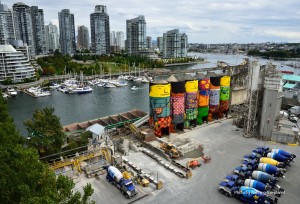Scales of Public Art: A tale of two cities
Tuesday February 2nd, 2016

Written by Vancouver Biennale Team Member Ammar
From an isolated perspective on the North West Coast, Seattle is the closest big city connected geographically to Vancouver through Cascadia. This comparison doesn’t extend into the Arts & Culture realm because Seattle to me is always the larger and more vibrant city (my wife constantly follows cultural events and programs in the city in the hopes of speeding up our next visit!). I’ll admit, I am often envious of the scale of art programming in Seattle, which I imagine receives a lot of the support and funding as a result of a larger population base and a healthy concentration of Fortune 500 companies. (With a growing tech industry in Vancouver, I hope we can soon mirror the levels of philanthropy in the Arts that our southern neighbors have come to rely upon).

So it was a welcome surprise and an honor to learn that Friends of Art on Pier 86 were inspired by the Vancouver Biennale’s 24,500 sq ft mural Giants by famous Brazilian artists OSGEMEOS on Granville Island. As a result, of their interest and admiration of our project they invited Vancouver Biennale founder Barrie Mowatt and myself to present to an audience in Seattle comprised of Port of Seattle commissioners, Seattle Art Museum curators and staff, City of Seattle, Art, Culture & Parks and other interested citizens.
The focus of our presentation was on the process and challenges of creating this gigantic mural on one of North America’s busiest concrete production plants Ocean Concrete. The feedback and comments we received at the end of the session hammered home a real sense of achievement and belief in using art as a catalyst for learning and community engagement. The transformative power of art was visible at this gathering of a room full of people from different walks of life all focused on the power of art as an agent of change.
Art on Pier 86 is a large and ambitious project, led by a dedicated steering committee with a unique opportunity to create another cultural icon along Seattle’s waterfront that is adjacent to the existing Olympic Sculpture Park, home to iconic public artworks. Except this time Vancouver won’t have to be so envious of our neighbour city because we already have our very own large scale public artwork in the form of giant transformed industrial silos in the middle of the city.